The whole scene of meteorites hitting the Earth during the past 33 years, why can't we feel it?
Specifically, the world map displays dots in 4 different sizes and colors, corresponding to the kinetic energy of each asteroid, the meteorite hits the atmosphere and then burns up due to the force of friction. The scientists used sensors for kinetic energy produced by the fireball, sound waves and energy at other wavelengths to determine its initial size before it entered Earth's atmosphere.
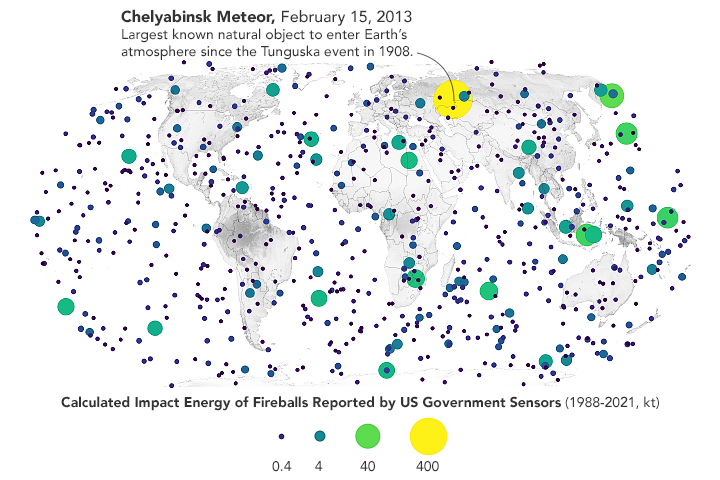
The use of such calculations helped scientists identify the fireball-shaped meteor that fell to Chelyabinsk, Russia on February 15, 2013 with a width of 19 meters and was the largest meteorite shown on Earth. map (yellow dot).
This fireball exploded right over the Ural Mountains, causing a shock wave that broke windows, damaged buildings, and injured about 1,600 people. The meteorite broke apart as it entered the atmosphere, scattering the debris and creating a shock wave estimated to be as strong as the 20 atomic bombs dropped on Hiroshima in 1945. The second largest group of fireballs. shown on the map mainly fall around the Pacific Ocean and border countries, such as Fiji and other islands around Asia.

The use of such calculations helped scientists determine that the fireball meteorite that fell to Chelyabinsk, Russia on February 15, 2013 was 19 meters wide.
The US has been hit by smaller meteorites, though not as many as in other parts of the world. However, most meteorites that have entered Earth's atmosphere since 1988 have broken up and fallen into the ocean. That's why people can't feel them.
Paul Chodas, director of CNEOS, once stated: "Many people have witnessed meteor showers, it is because there are many meteors falling to Earth at the same orbit. Every hour, a meteor shower can bring Earth at least 100 large and small meteorites. On the other hand, fireball events like Chelyabinsk are quite rare and can burn up in the sky at any time of the year."

The meteorite broke into pieces as it entered the atmosphere, scattering the debris and creating a shock wave estimated to be as strong as the 20 atomic bombs dropped on Hiroshima. Pictured is one of the meteorites found by humans
The largest meteor shower is the Perseids, which occurs in early August, when 40 to 100 fireballs are seen every hour in the sky from the 11th to the 13th.
NASA photographer Bill Ingalls captured a beautiful image of a meteorite that fell on August 11, from the top of Mount Spruce in West Virginia, USA. A few clouds hovered, reflecting light from distant urban areas.
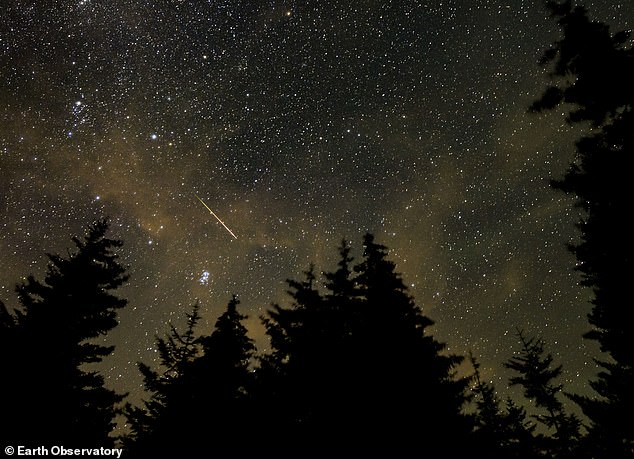
Photograph of a shooting star taken by photographer Bill Ingalls
Bill Cooke, head of NASA's Meteorite Environment Office, said: "The meteorite in the picture appears to be blue in some places, because it excites oxygen molecules during its impact with the atmosphere." .
He also notes that the Perseids are very special, because there are many bright meteors falling to Earth. Based on data from NASA's network of meteor cameras across the sky that day, it was possible to detect meteors brighter than Jupiter.
Cooke analysis: "The number of Perseids meteor brighter light in all other meteor shower and 30% brighter than the Geminid meteor shower occurred on January 12/2020".
The difference between an asteroid, meteorite and other space rocks
Asteroids are a group of small celestial bodies floating in or out of the solar system. Most of them are located between Mars and Jupiter in the Main Belt.
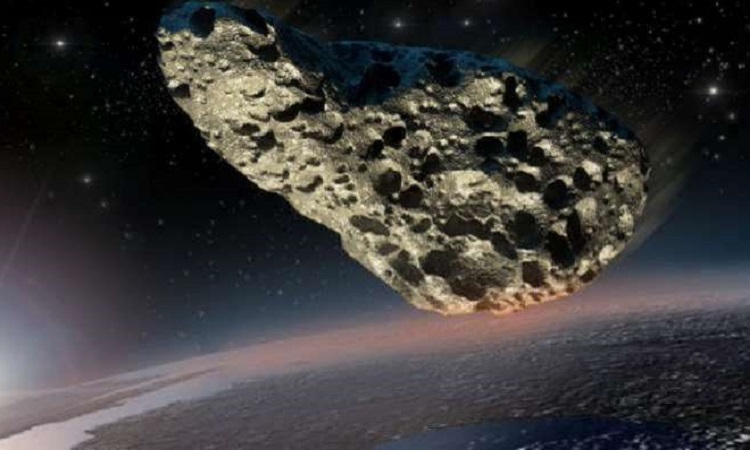
A comet is a body that resembles an asteroid but is not made up of much rock, but mostly ice. It has been described by some experts as a "dirty snowball" because it contains carbon dioxide, methane and frozen water mixed with dust and minerals. Their orbits take them far beyond the solar system.
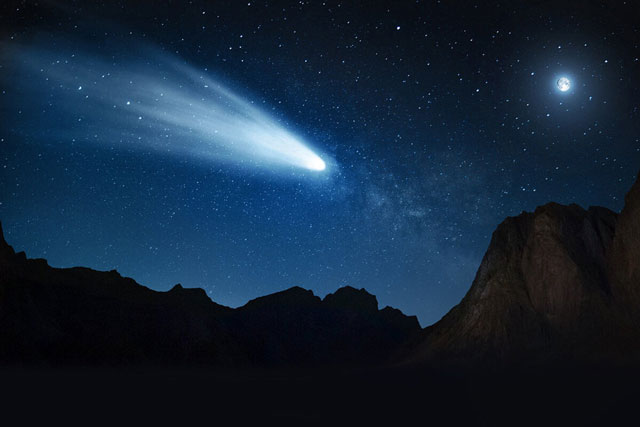
A meteor or meteor is the line of sight of meteors and meteorites as they enter the Earth's atmosphere. On Earth, the visible paths of these meteors are due to the heat generated by the compressive pressure as they enter the atmosphere.
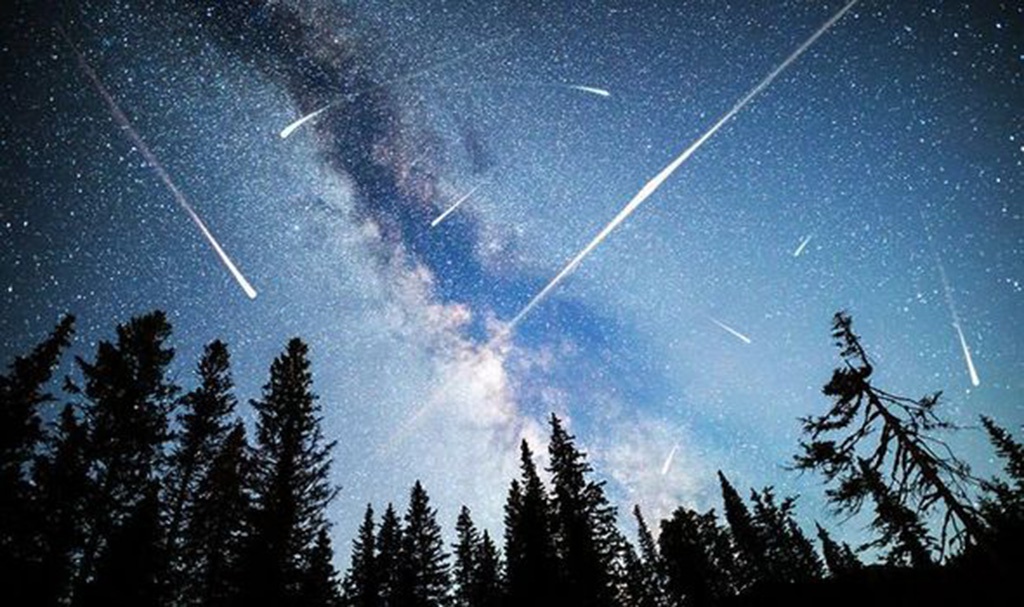
If any of the above objects fly to Earth, it is called a meteorite. Meteorites and meteorites often originate from asteroids and comets. For example, if Earth passed through the tail of a comet, most of the debris would instantly burn up in the atmosphere and form a meteor shower.
You should read it
- Interesting discoveries about asteroids in the solar system
- Vietnam can observe the Orionid meteor shower tonight and tomorrow morning
- If the Earth's ocean and land area ratios were reversed, what would happen?
- Tonight there will be meteor shower Leonids, and in Vietnam it can be observed
- Explore the mysterious 8th continent submerged under the Pacific Ocean
- If the atomic bomb exploded in the ground, what horrible thing would happen?
- The asteroid is similar in size to the Pyramids of Giza, and is likely to crash into Earth on May 6, 2022
- A meteor with a speed of 32,000 km / h is approaching Earth's orbit
May be interested
- You will be startled when watching the video describing the process of Earth's hotness in the past 100 years
 for more than 100 years, the earth has become warmer and the average temperature in many parts of the world is constantly increasing to an alarming level.
for more than 100 years, the earth has become warmer and the average temperature in many parts of the world is constantly increasing to an alarming level. - History of Earth formation and 25 milestones (Part I)
 formed nearly 4.6 billion years ago and up to 1 billion years ago, life began to appear on the surface of the earth. since then, many things have changed on this planet, below are the most important milestones in the history of our planet's development.
formed nearly 4.6 billion years ago and up to 1 billion years ago, life began to appear on the surface of the earth. since then, many things have changed on this planet, below are the most important milestones in the history of our planet's development. - How did scientists determine the age of the Earth?
 to estimate the age of the earth, scientists used methods to determine radioactive isotopes of rocks on the planet and extraterrestrial meteorites.
to estimate the age of the earth, scientists used methods to determine radioactive isotopes of rocks on the planet and extraterrestrial meteorites. - The discovery of the 'Second Earth' can exist only 4.2 light-years away from Earth
 scientists at the european southern observatory (eso) have discovered an earth-like rock planet outside the solar system. in particular, it is only 4.2 light-years from earth and life can exist. with that distance, people can set foot on this planet in the near future.
scientists at the european southern observatory (eso) have discovered an earth-like rock planet outside the solar system. in particular, it is only 4.2 light-years from earth and life can exist. with that distance, people can set foot on this planet in the near future. - The mystery behind the Earth wallpaper on the first iPhone 13 years ago
 this beautiful, crisp, and perfectly-looking image of the earth is called blue marble 'and was used as the default iphone desktop background 13 years ago. but this is only a product of editing in photoshop software done many years ago.
this beautiful, crisp, and perfectly-looking image of the earth is called blue marble 'and was used as the default iphone desktop background 13 years ago. but this is only a product of editing in photoshop software done many years ago. - The new hypothesis about Snowball Earth and how the earth freezes hundreds of millions of years ago
 researchers at harvard university have changed the way we think about the largest ice age event on earth, snowball earth. this video will show you how the earth froze according to this hypothesis.
researchers at harvard university have changed the way we think about the largest ice age event on earth, snowball earth. this video will show you how the earth froze according to this hypothesis. - When did the first rain appear on Earth?
 new research by a team of researchers from australia and china shows that the first rain appeared on earth about 4 billion years ago, 500 million years earlier than previous calculations.
new research by a team of researchers from australia and china shows that the first rain appeared on earth about 4 billion years ago, 500 million years earlier than previous calculations. - It takes hundreds of thousands of years for light to travel from the center of the Sun to Earth?
 the answer is correct and the exact number is about 170,000 years. perhaps everyone was surprised by that terrible number. because as we know, light only takes more than 8 minutes to go from the surface of the sun to earth.
the answer is correct and the exact number is about 170,000 years. perhaps everyone was surprised by that terrible number. because as we know, light only takes more than 8 minutes to go from the surface of the sun to earth. - The giant meteorite weighing 40 million tons caused a disaster equivalent to 65,000 atomic bombs about to crash into Earth?
 the earth may be threatened by a giant meteorite weighing 40 million tons, if its impact occurs its destructive power is equivalent to 65,000 american atomic bombs dropped on hiroshima, japan. this is the prediction of a leading astronomer in the world that many people are afraid of.
the earth may be threatened by a giant meteorite weighing 40 million tons, if its impact occurs its destructive power is equivalent to 65,000 american atomic bombs dropped on hiroshima, japan. this is the prediction of a leading astronomer in the world that many people are afraid of. - The Earth used to be purple and 8 secrets of little surprise
 the earth still has many mysteries that people cannot discover. here are the incredible surprises about earth that make you change the way you look at our common home.
the earth still has many mysteries that people cannot discover. here are the incredible surprises about earth that make you change the way you look at our common home.










 Investing in virtual money: The ambiguity between 'currency' and 'stocks' confuses Wall Street
Investing in virtual money: The ambiguity between 'currency' and 'stocks' confuses Wall Street The highest quality, easiest to use, why FaceTime was defeated by Zoom between the Covid-19 pandemic
The highest quality, easiest to use, why FaceTime was defeated by Zoom between the Covid-19 pandemic Startup drawing chart 'Made in Vietnam' attracts users from 165 countries
Startup drawing chart 'Made in Vietnam' attracts users from 165 countries New trend of global technology supply chain: 'Not Made in China'
New trend of global technology supply chain: 'Not Made in China' Taiwan promotes technological innovation in the era of 'Industry 4.0'
Taiwan promotes technological innovation in the era of 'Industry 4.0' Modernize your data center with Dell Technologies Vxrail
Modernize your data center with Dell Technologies Vxrail